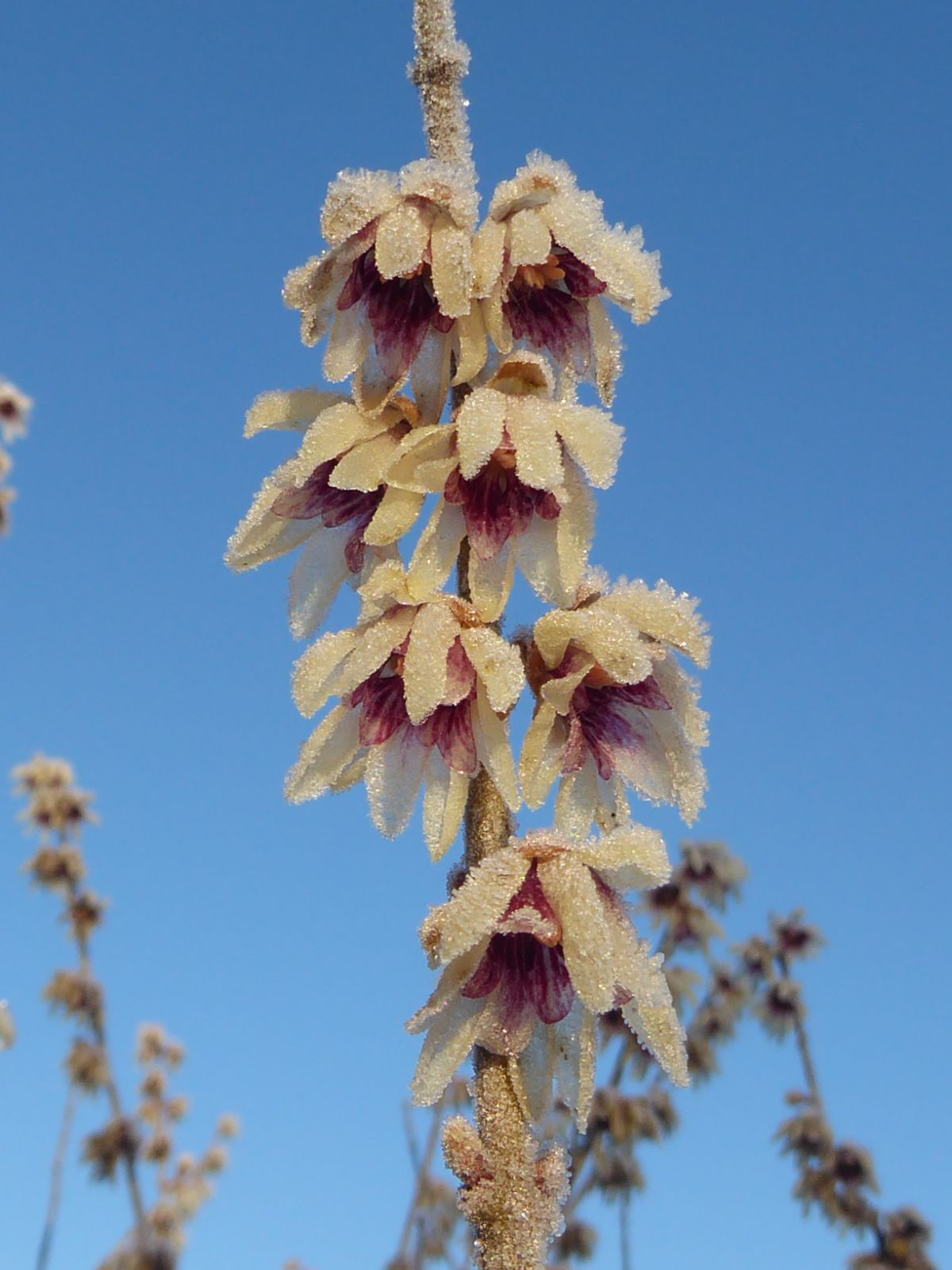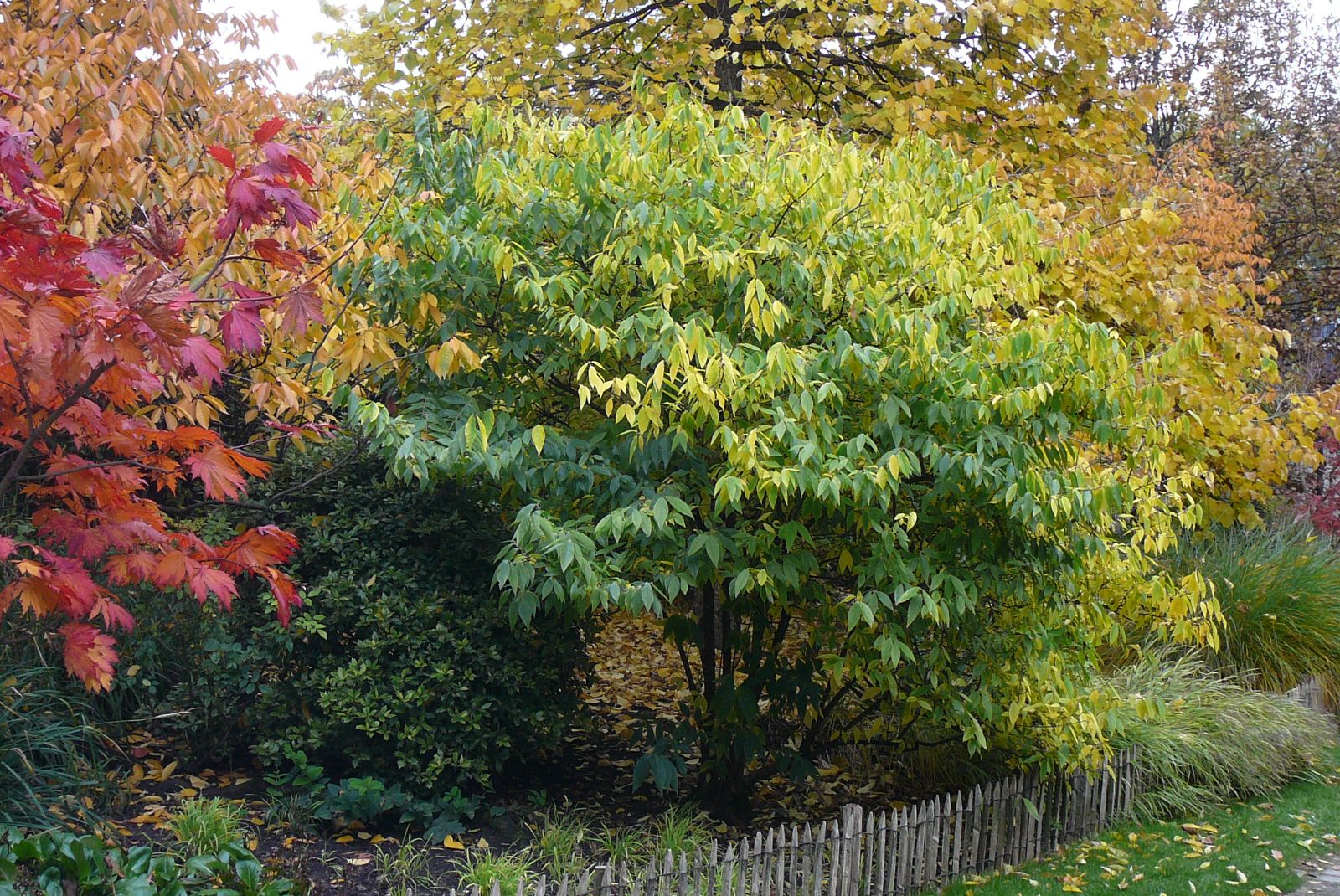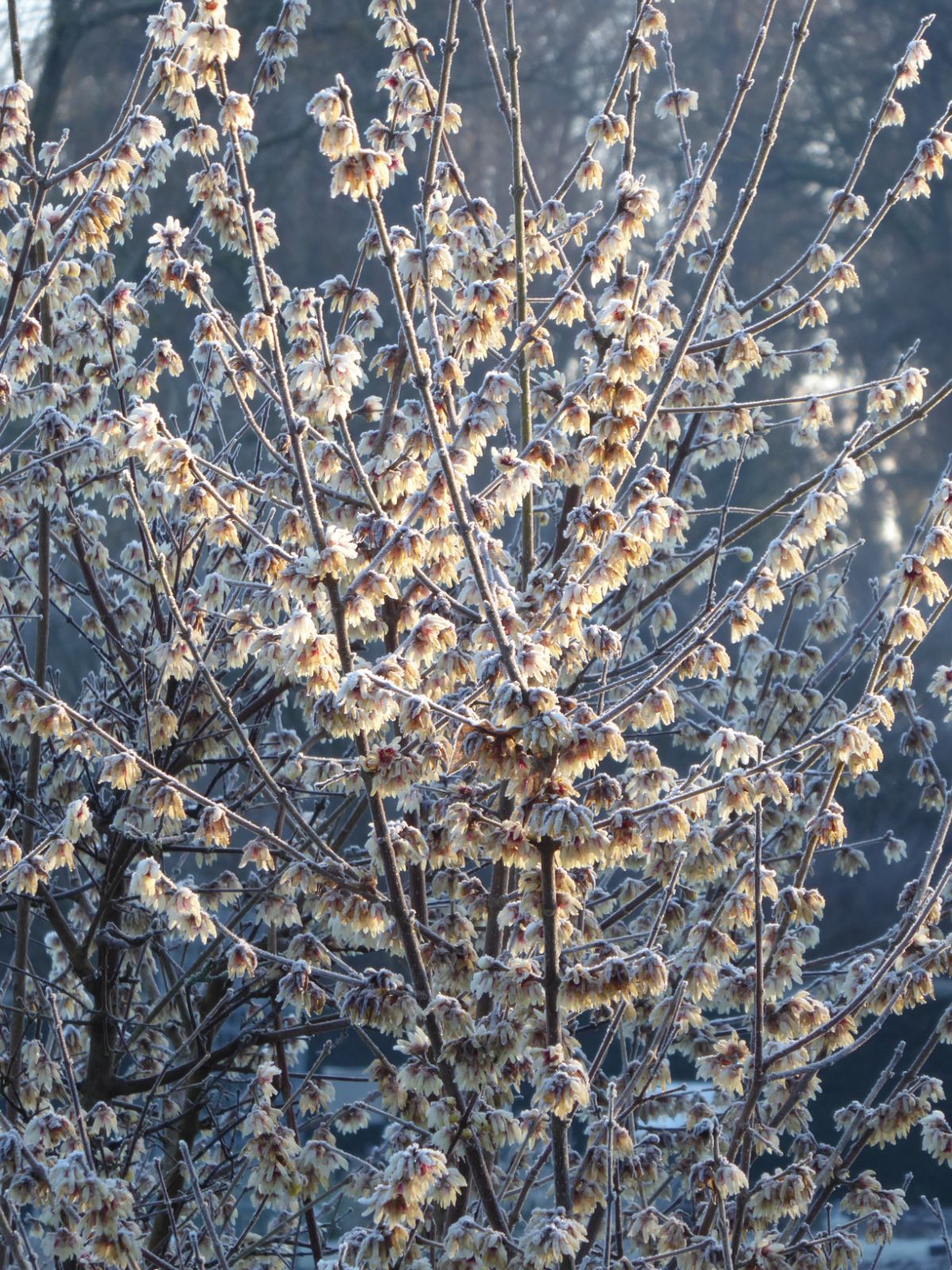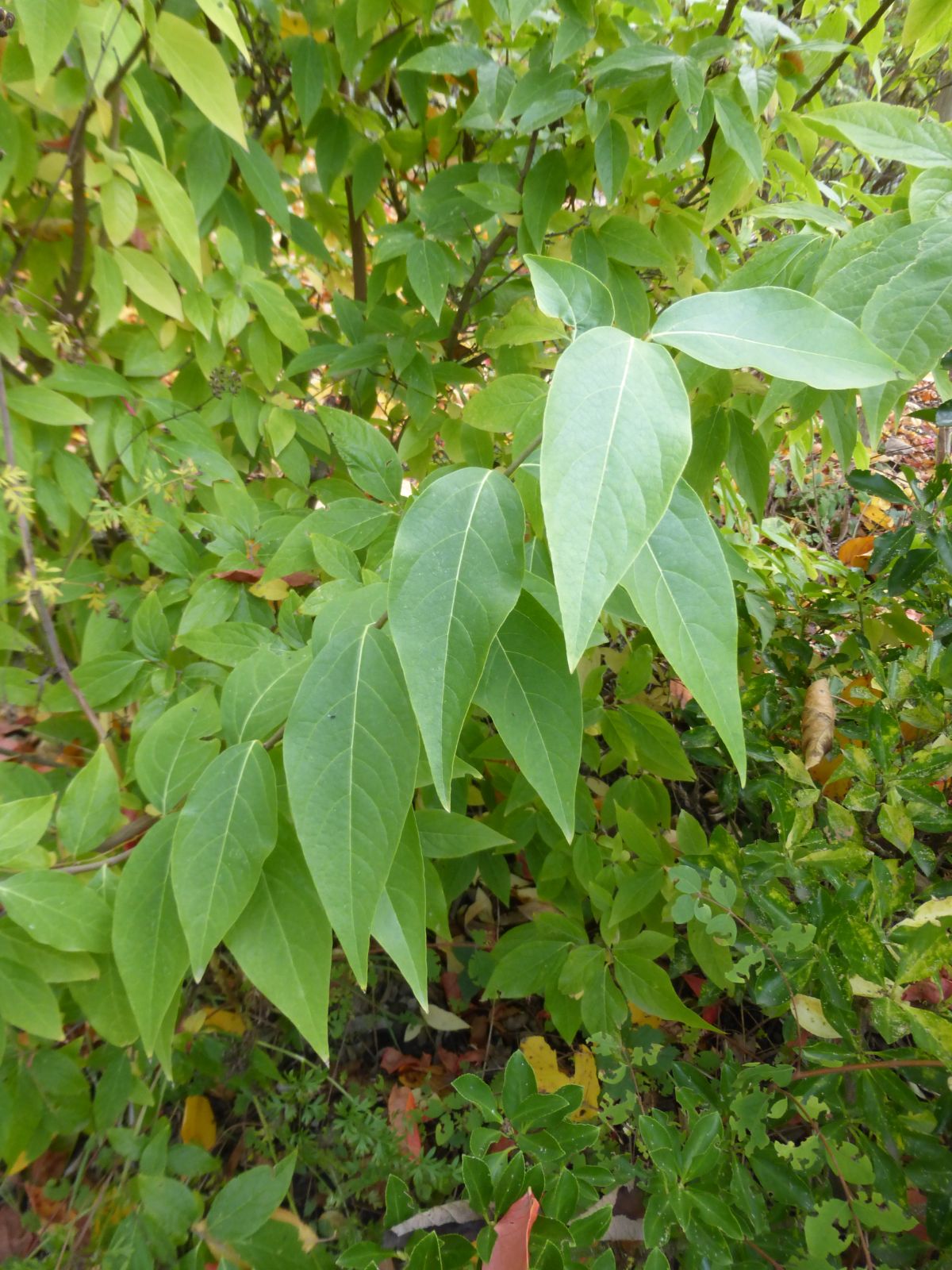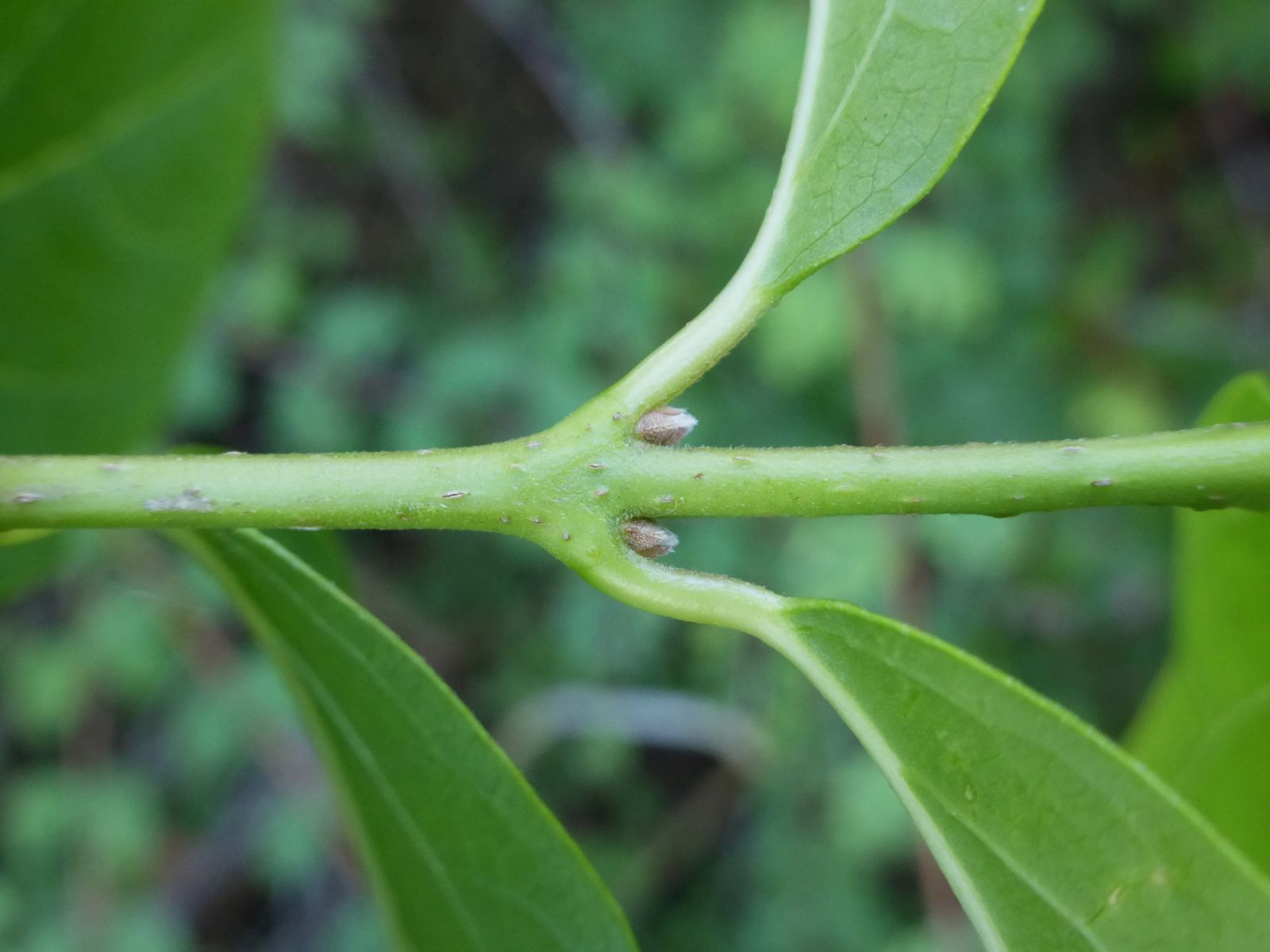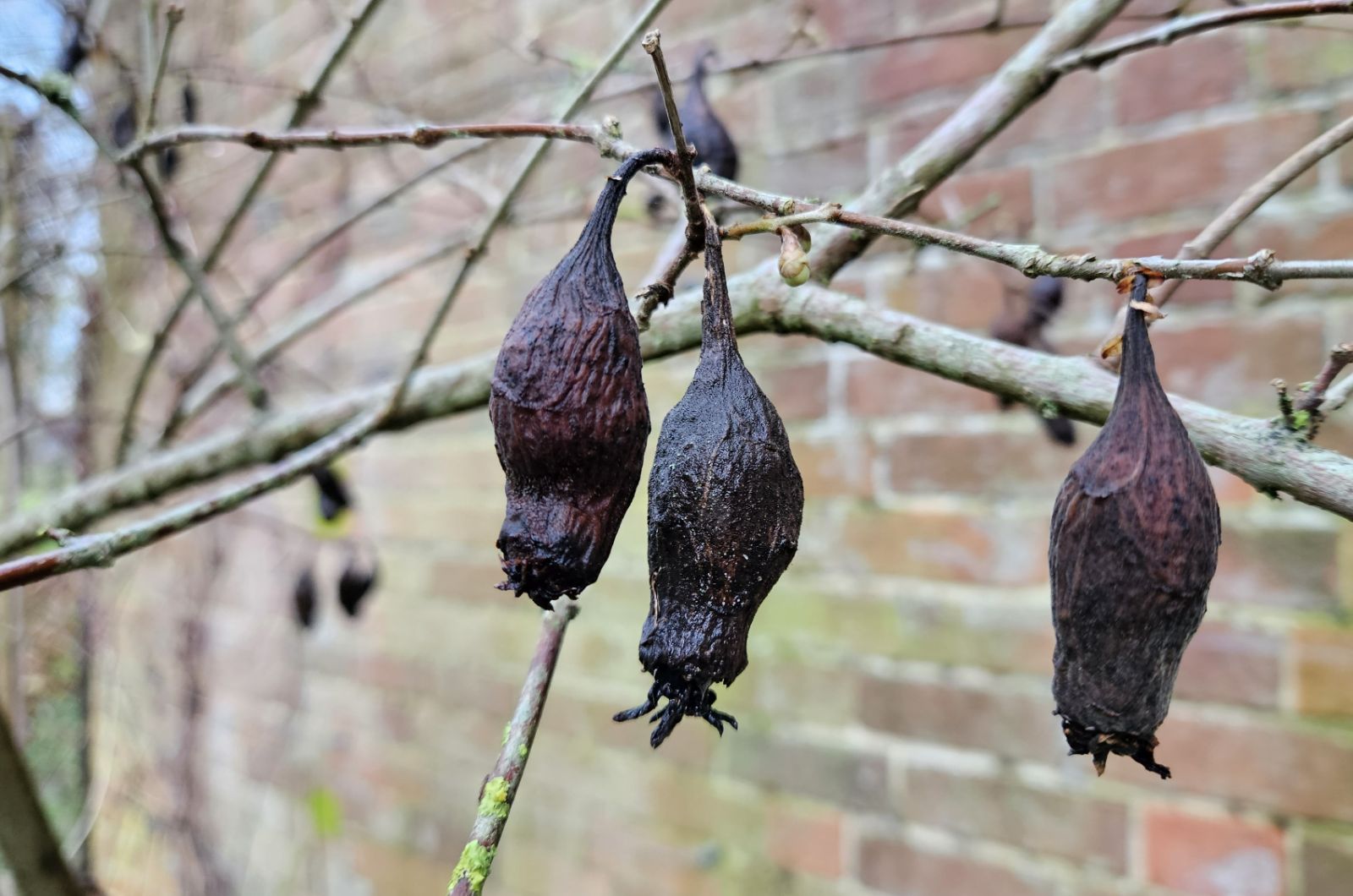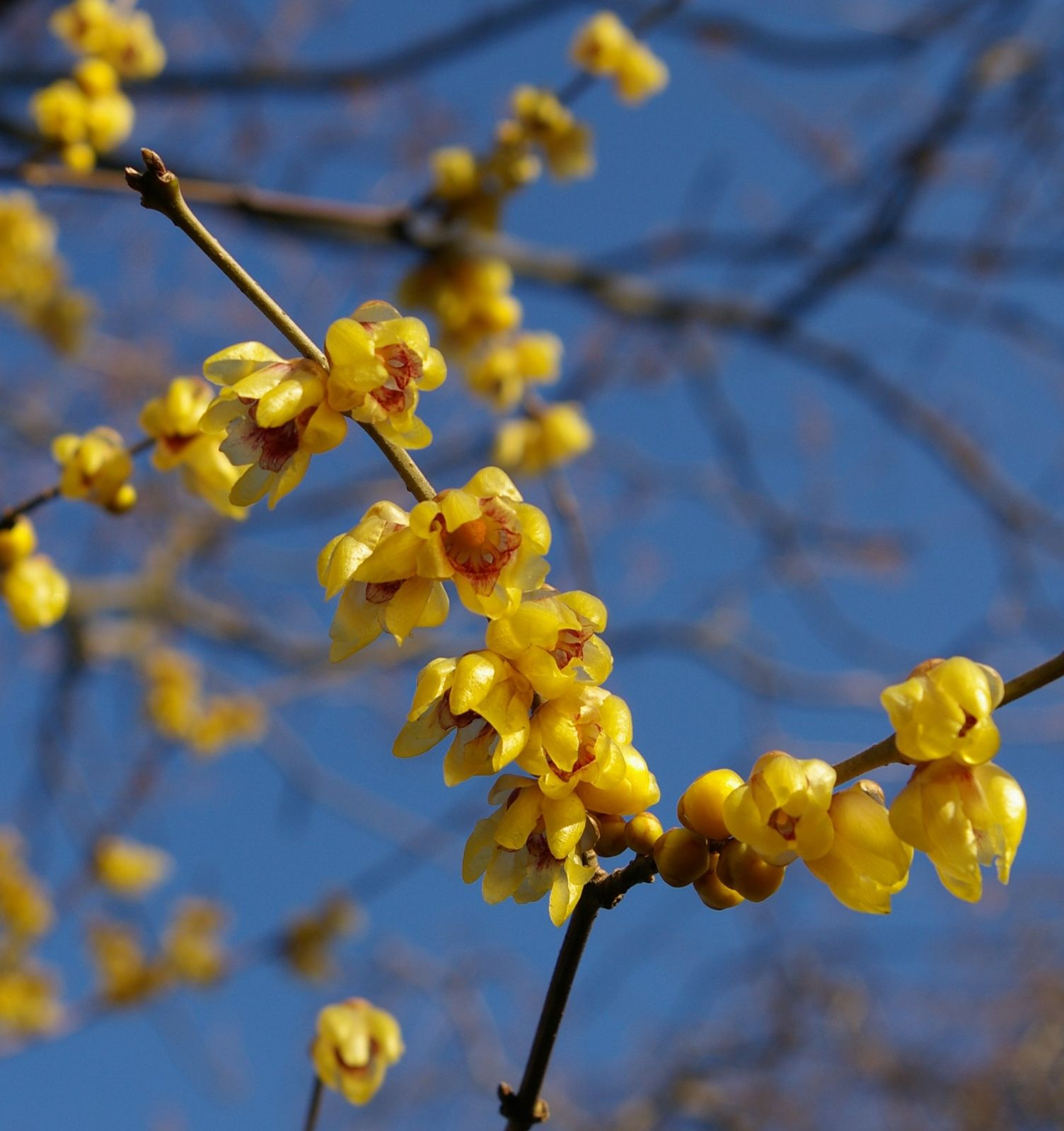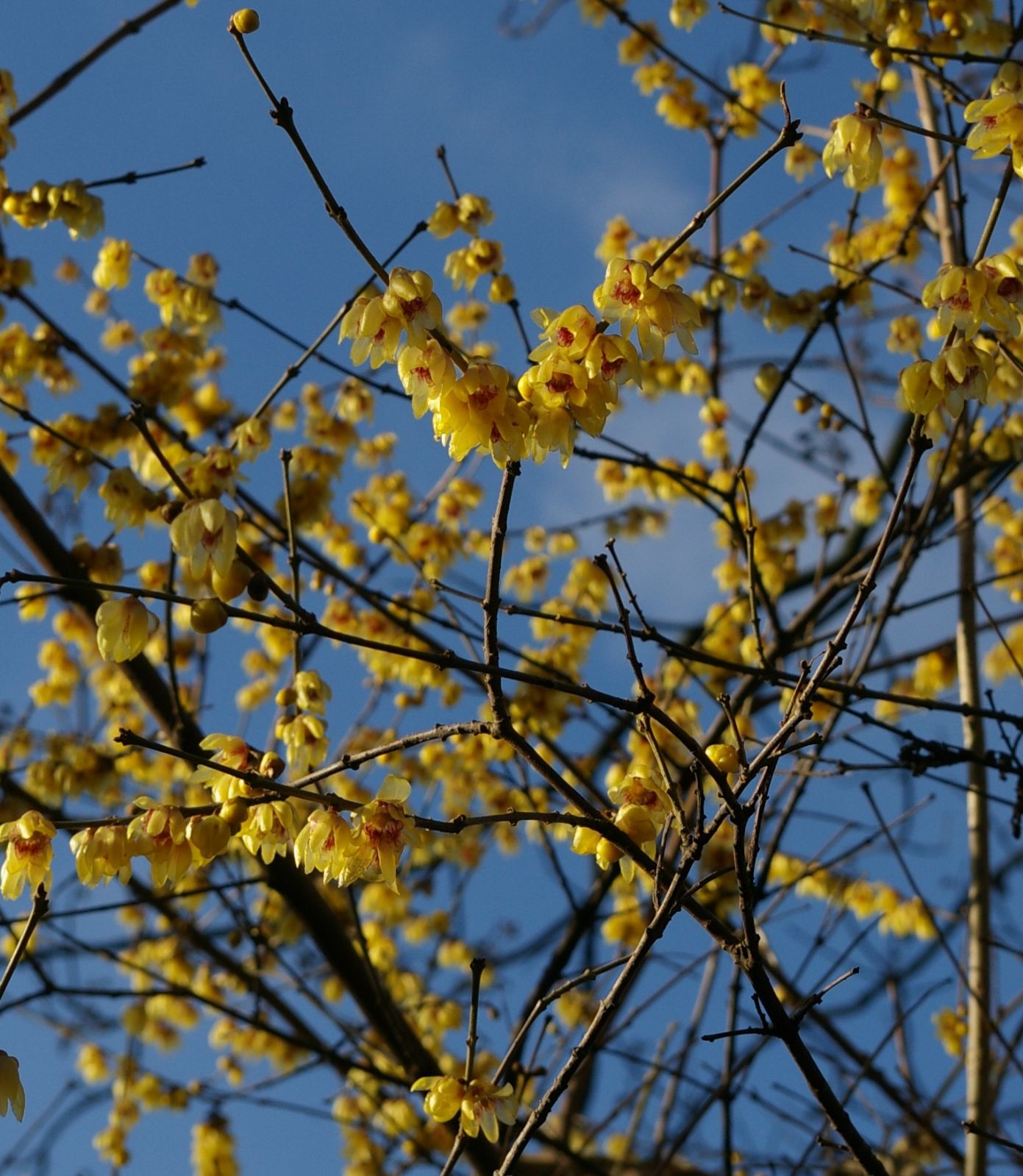Chimonanthus praecox
Credits
Article from Bean's Trees and Shrubs Hardy in the British Isles
Recommended citation
'Chimonanthus praecox' from the website Trees and Shrubs Online (treesandshrubsonline.
Genus
Common Names
- Winter Sweet
Synonyms
- Calycanthus praecox L.
- Chimonanthus fragrans (Loisel.) Lindl.
A deciduous shrub, naturally about 8 ft high, and of compact, bushy habit but growing considerably higher on walls. Leaves rough to the touch above, but free from down except when quite young, and on the primary nerves; lanceolate with an acuminate apex, 2 to 5 in. long, dark lustrous green. Flowers exceedingly fragrant, produced at various times between November and March according to the weather, but in ordinary seasons at their best in December against a wall; they are solitary on very short stalks at the joints of the previous summer’s shoots, 3⁄4 to 1 in. across, the outer tepals of an almost transparent yellowish green, the inner ones smaller and purplish. Seeds produced in a stalked, gourd-shaped structure 11⁄2 in. long, to the apex of which the stamens remain attached. Bot. Mag., n.s., t. 184 (2).
From the Supplement (Vol. V)
Although hardy enough in the open ground, this species flowers more freely when given the additional summer heat provided by a wall. In such a position it should be pruned in early spring as soon as the flowers have faded.
Mention was made on page 605, last paragraph, of C. yunnanensis. Sir William Wright-Smith distinguished this from C. praecox ‘with some hesitation’ by its semi-persistent ovate leaves not acuminate at the apex, and the broader and rounder perianth-segments. It is now in cultivation at Kew, raised from seeds received from the Kunming Botanic Garden in Yunnan.
'Grandiflorus'
Flowers a purer yellow and more showy than in the type, and as much as 1{3/4} in. across, but not so strongly fragrant. The leaves, too, are larger; I have seen them occasionally as much as 9 in. long and 4 in. wide. The shrub is of stronger growth; there used to be one 15 ft high at Warley Place. Bot. Reg., t. 451; Bot. Mag., n.s., t. 184 (3).'Luteus'
A variety known in gardens in the early part of the nineteenth century and described by Loudon. It differed in having the inner segments (tepals) yellow instead of purplish. Garden forms of this character have long been cultivated in China and Japan. The plant now grown as C. praecox ‘Luteus’ was probably introduced from Japan around 1930 and is unlikely to be the clone known to Loudon.This delightful old shrub and its varieties have two strong claims to the notice of planters: it flowers in midwinter when very few other things are in bloom, and its blossoms diffuse around them one of the most pleasing of perfumes. A charming way to use cut sprays for indoor decoration is to associate them with sprays of Mahonia aquifolium. It is hardy, and frequently flowers in the open at Kew with great freedom. But usually (and always in cold localities) it is grown on a wall. It requires no pruning in the open, but on a wall an annual pruning is necessary. It should not be deferred much beyond February, so that the fullest possible length of time is allowed for the new growths to be made on which depend the next winter’s crop of flowers. The pruning should consist of a shortening back of the stronger twigs, and the entire removal of the weaker and overcrowding ones. At the same time any re-tying that may be needed should be done, also the laying-in of new shoots in vacant places. Propagation is effected by layers and seeds; cuttings are extremely difficult to root.C. praecox was introduced from China in 1766. C. nitens Oliver, is an evergreen species with glabrous, shining oval-lanceolate leaves, 3 to 4 in. long. Flowers white, solitary, axillary, {3/4} in. across. Found by Henry near Ichang, it has not yet been introduced, and is probably rare in a wild state. The third species, C. yunnanensis W. W. Sm., was discovered in the Sungkwei Valley by Forrest at 6,000 to 7,000 ft altitude; probably not in cultivation.

